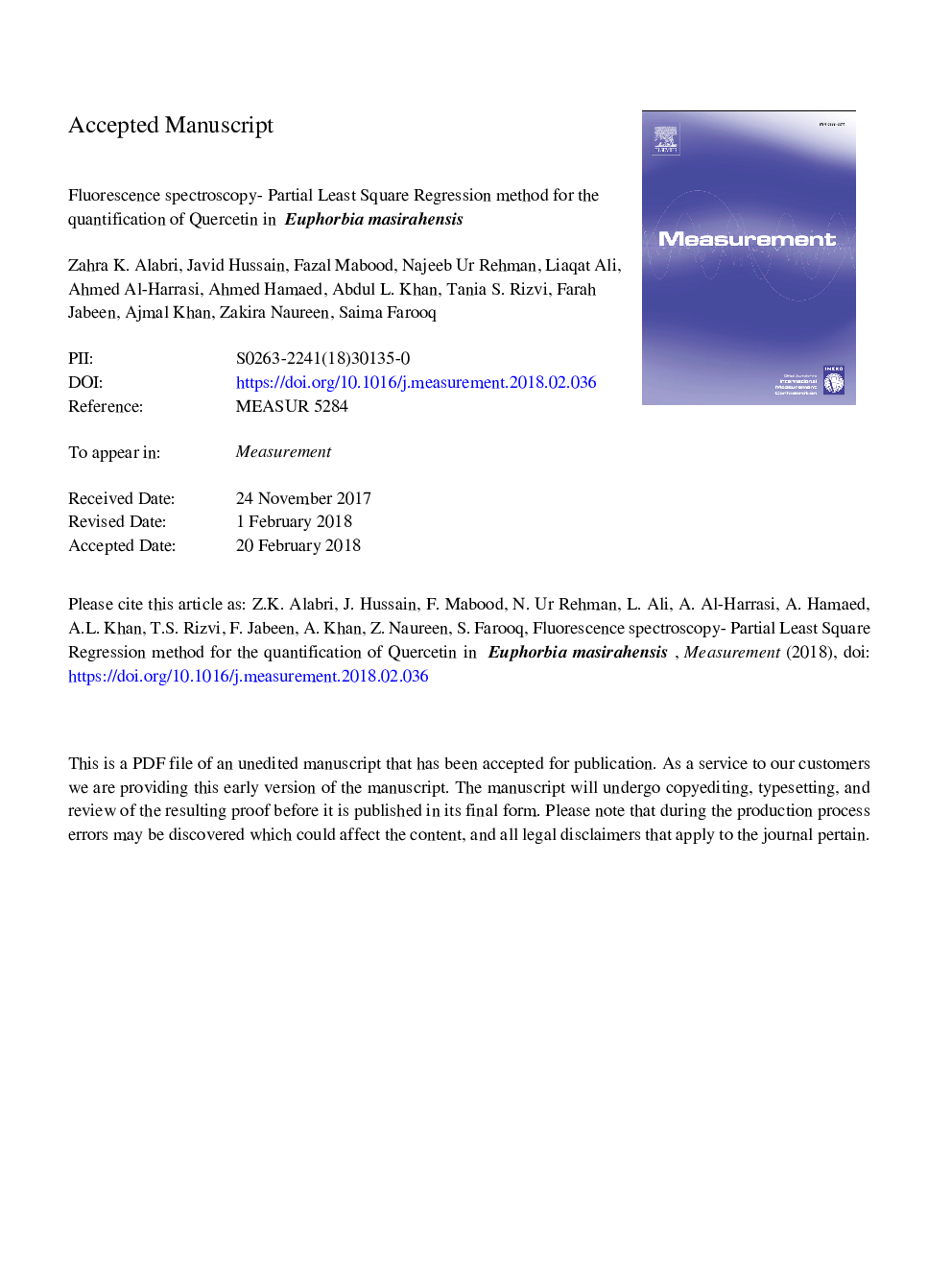| Article ID | Journal | Published Year | Pages | File Type |
|---|---|---|---|---|
| 7121565 | Measurement | 2018 | 21 Pages |
Abstract
Quercetin is a well-known flavonoid that has been listed as ingredient in many supplements, beverages and foods for a long time. The use of quercetin has been widely associated with a great number of health benefits such as antioxidant, anti-inflammatory, antiviral and anticancer as well as to ease some cardiovascular diseases such as heart disease, hypertension, and high blood cholesterol. In this study, fluorescence emission spectroscopy coupled with partial least square regression (PLSR) was used for the estimation of quercetin in different fractions of Euphorbia masirahensis and the obtained results were cross validated by UV-visible spectroscopy. Different fraction of methanol extract of dried plant material were subjected to emission spectroscopic analysis, followed by PLS regression . The results indicated that n-butanol fraction contained the higher quercetin contents i.e. (5.83â¯Â±â¯0.09%) followed by ethyl acetate fraction i.e. (4.25â¯Â±â¯0.06%). The method was parallel cross validated with UV-visible spectroscopy. The results from both methods were found to be very consistent but the fluorescence-PLSR method was found to be of higher accuracy due to its high sensitivity with slope value of 0.99 and RMSE vlues of 0.36%. This emission spectroscopic method coupled with PLSR is sensitive, reproducible, simple, eco-friendly and non-destructive.
Related Topics
Physical Sciences and Engineering
Engineering
Control and Systems Engineering
Authors
Zahra K. Alabri, Javid Hussain, Fazal Mabood, Najeeb Ur Rehman, Liaqat Ali, Ahmed Al-Harrasi, Ahmed Hamaed, Abdul L. Khan, Tania S. Rizvi, Farah Jabeen, Ajmal Khan, Zakira Naureen, Saima Farooq,
